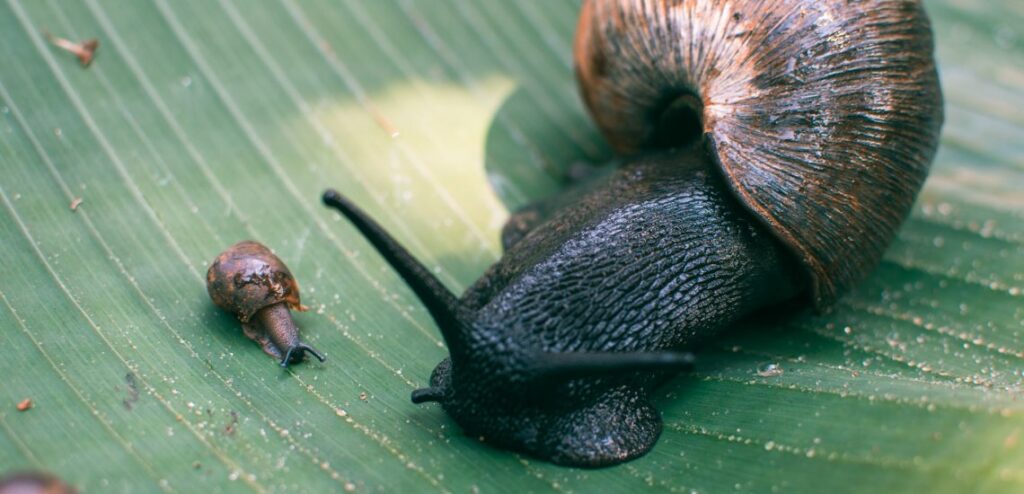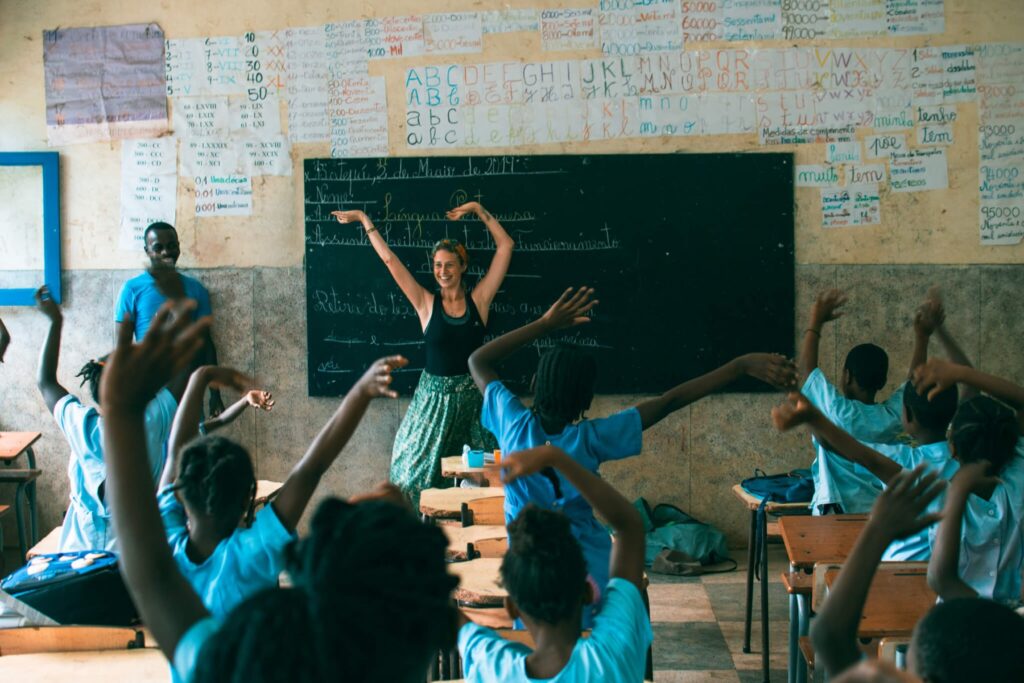Protecting the forest giants

On the remote African islands of São Tomé and Príncipe, conservationists are using education and storytelling to protect a unique snail and the forest it lives in – before it gets forgotten forever.
By Jessica La
Deep within the rainforests of São Tomé and Príncipe hides a slow-moving, gentle giant: the Obô Snail Archachatina bicarinata. You may have encountered giant African land snails before, or even kept one as a pet – but this magnificent mollusc is something different. Its much thicker, larger shell spirals in the opposite direction to its mainland counterparts. It is one of hundreds of completely unique species that have evolved on these two isolated islands off the West coast of Africa.
Also among the stunning endemic wildlife are birds like the Dwarf Olive Ibis Bostrychia bocagei and São Tomé Grosbeak Crithagra concolor – both Critically Endangered due to hunting and habitat loss. Dense tropical forest used to span across the islands from shore to shore, from the mountaintops down to the sea strand. But today, only a third of this pristine paradise remains. The rest has been given over to palm oil and sugarcane plantations, or chipped away by illegal logging. For the Obô Snail, the situation got a lot worse in the 1980s when the non-native West African Land Snail Archachatina marginata was introduced – either by accident in cargo ships, or on purpose as a food source. This fast-growing, fast-breeding usurper may be outcompeting the Obô Snail, which has retreated to a few isolated patches of highland forest in the Obô Natural Park: a nature reserve short on staff and resources.
It’s easy to care about beautiful vertebrate victims – but the squishy ones are just as ecologically important. Conservation Biologist Martina Panisi recalls her concern after surveys made through Lisbon University found that little-known snail had almost disappeared:
“My first thought was… nobody cares! But then we found that the local community cared. Local people were the ones with the knowledge about the snail. They were the ones who understood its importance.”
When passers-by asked Panisi and the Forest Giant team about their research, she discovered that older generation remembered the snail, and could provide valuable information about it. They learned that the snail is culturally important, both as a food source and as a medicine. The team realised that local people were the ones with the power to protect the forest giants and their habitat.

With support from the Critical Ecosystem Partnership Fund (CEPF) and Alisei, they set up a small conservation centre to study the snails and raise awareness through environmental education. During sessions, they found that the snail’s story had to be told differently depending on the age of the audiences. Adults remembered the snail, but worryingly, children were more familiar with introduced species than the islands’ endemic ones.
“The snails are a great way to get the two generations together to talk about endemic wildlife that adults remember and children don’t know,” says Panisi. “They also open up conversations about the forest as a whole. Simply telling people to stop illegally logging sounds bossy and can be met with pushback. This way, we provide the knowledge, and the communities themselves decide how to act on it. It’s their snail, and it’s up to them to save it.”
Already, many communities are deciding not to collect the snail, and are thinking about their role in protecting the wider rainforest. The next step is to make the project’s positive impacts last in the long term. One way is though alternative livelihoods: people who once gathered snails are now sewing beautiful snail-themed merchandise such as clothing and embroidery. The Forest Giants team is collaborating with Flora and Fauna International to draw up a long-term plan for the species on Príncipe, and exploring exciting new avenues to ensure that change happens fast for this sluggish mollusc.
The funds of the Obô Snail project are managed by BirdLife, through a CEPF small grant for the Guinean Forests of West Africa Hotspot that BirdLife is responsible for implementing.
BirdLife has been active in São Tomé & Príncipe for over 10 years. In 2017 BirdLife International, through the EU-funded ECOFAC 6 Regional Programme, obtained a 4.3-year grant for the protection of the Natural Parks in São Tomé and Príncipe islands. BirdLife managed CEPF actions enables to build on synergies and promote complementarity in intervention.
The Critical Ecosystem Partnership Fund (CEPF) is a joint initiative of l’Agence Française de Développement, Conservation International, the European Union, the Global Environment Facility, the Government of Japan, and the World Bank. A fundamental goal is to ensure civil society is engaged in biodiversity conservation.


